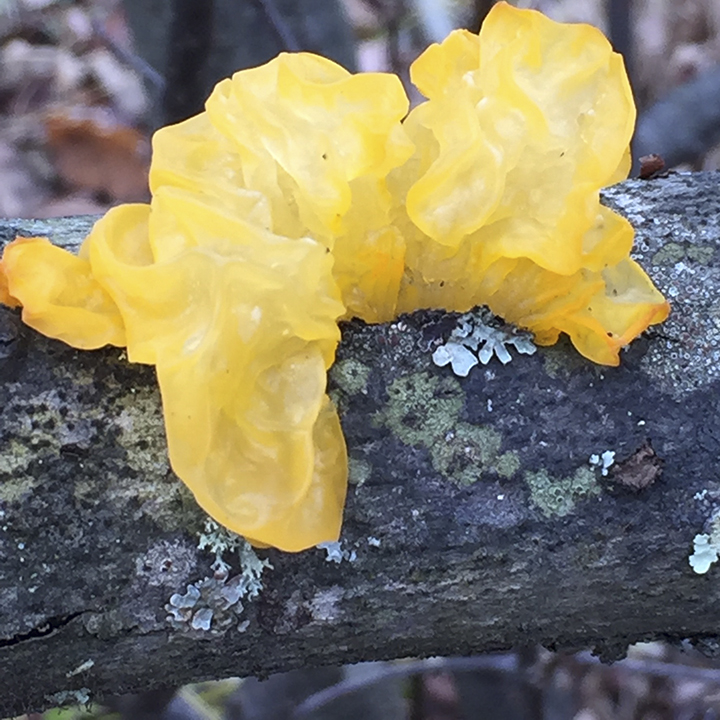The cycle of nature dictates that dead trees, branches, and twigs in wooded areas become hosts to wood-rotting fungi. These fungi are saprobic, obtaining their nutrients from dead and decaying wood. Some of these fungi are themselves hosts to other fungi.
Witches’ Butter (Tremella mesenterica), a very common and widespread jelly fungus, parasitizes wood-rotting crust fungi in the genus Peniophora. It can be found during wet periods year-round but especially in late fall, singly or in groups, on logs, branches, and twigs of oaks and other hardwoods. The wood on which it is found may be fallen or still on the tree but is always dead and usually has the bark still attached.
When young and fresh the fruiting body is one or more stemless, gelatinous but tough, ¾″ to 4″ wide, 1″ to 2″ in height lobes and folds. The lobes are translucent, shiny, and pale orangish-yellow to bright yellowish-orange. When clustered, they fuse together and resemble an exposed brain. They are mostly water. In wet conditions they swell and lose shape, looking like a dollop of melting butter. When they begin to dry they become darker orange, more opaque, and smaller. In dry conditions they become dark orange, shriveled up, hard, and brittle. Sometimes they collapse into an inconspicuous film when they dry, but will revive with the next wet weather. It is not poisonous but cooking it will release the water and leave little to eat.
Witches’ Butter is distinguished from other jelly fungi by lobes that are thin, broad, stemless, yellowish-orange, shiny, folded, and brain-like in appearance when clustered; by its occurrence on logs, branches, and twigs of hardwoods; by its shriveling when dry; and by its host Peniophora.

